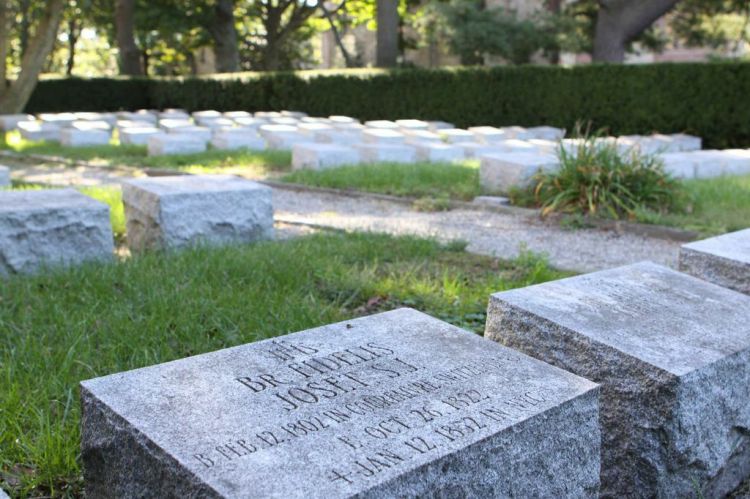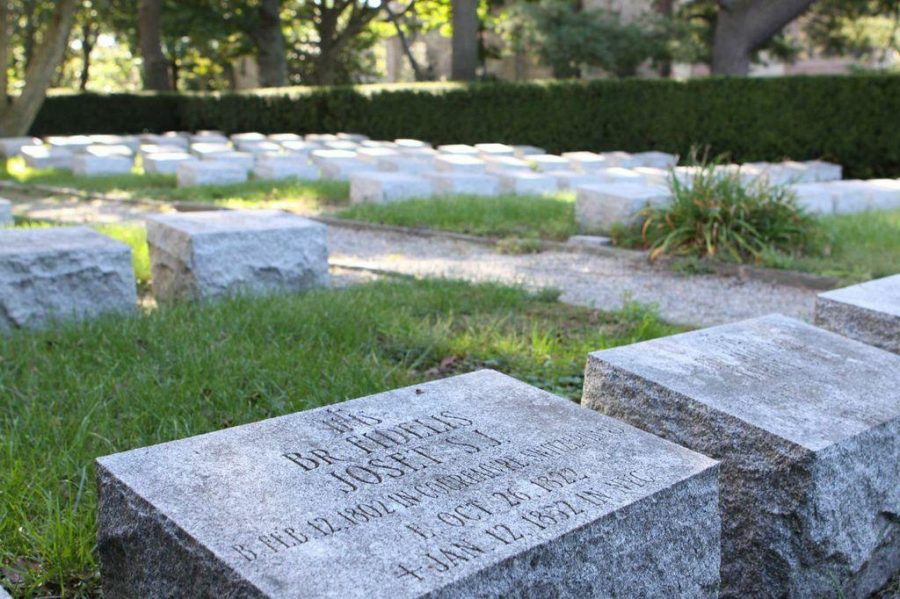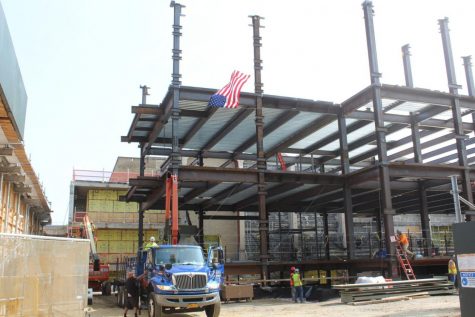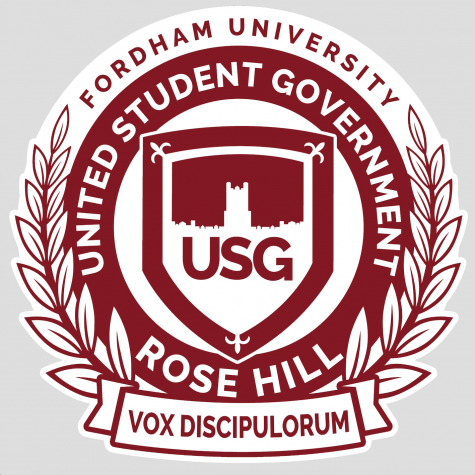Rumors Swirl Above Campus Graveyard
September 24, 2014

By Alexandra Laird
Most students are familiar with the small, enclosed graveyard next to the university church. Fordham students pass the cemetery every day on their way to class, but very few know the truth about what—or what doesn’t—lie beneath. Incoming students and visitors to the school indulge in rumors that the cemetery is a “phantom” one or “just for show.”
“I was told on a tour that there are no bodies buried in the graveyard, that it is just a memorial,” reveals Crystal Gonzalez, GSB ‘17. Another popular rumor circulating the campus is that the cemetery was constructed to evade a zoning regulation. Both popular theories perpetuate the myth that the space is empty and the 138 tombstones are the only historical remains in the cemetery.
Roger Wines, professor emeritus of history, who worked on an urban archaeology project on the subject, said that in the early 19th century the cemetery was located on former Fordham property where the New York Botanical Garden is now located. When this property was sold to the state of New York in 1890, the bodies were moved to the current location next to the church.
Upon the construction of nearby Faber Hall, the bodies of 38 Jesuits were moved from their initial burial locations in the then-larger cemetery to alternate locations within the current enclosement. Some of the bodies found there include Father Augustus Thebaud S.J., the university’s first Jesuit president, Father James Perron, S.J., a French army officer considered to be a model Jesuit as well as some former students.
To be even more specific, the text of the cemetery plaque from 2000 reads: “In their hope of resurrection here lie the remains of 124 sons of St. Ignatius Loyola: 68 Jesuit priests; 44 Jesuit brothers; 12 Jesuit scholastics; 77 of them had assignments to Fordham. Others buried in the same cemetery for whom the Jesuits labored are: three Diocesan Seminarians, nine students, and two college workmen. May they rest in peace of Christ.”
Additional and modifications to the graveyard include the replacement of the historical white marble headstones with low, granite stones.
As a result, scholarly research from individuals like Wines and Fr. Thomas Hennessy can dispel the rumors that the cemetery is merely decorative.
“When they were digging up part of the cemetery to build Faber, I was a student at Fordham College. One of my classroom buddies marveled at how tall one of the skeletons was — a very long legged Jesuit,” Wines said. Although it is true that there are bodies buried in the cemetery, it is not an active burial ground. Wines also shared that Jesuits of Fordham are no longer buried at this location. Instead, their interments are upstate at a shrine in Auriesville, New York.
__________












If you want a picture to show with your comment, go get a gravatar.